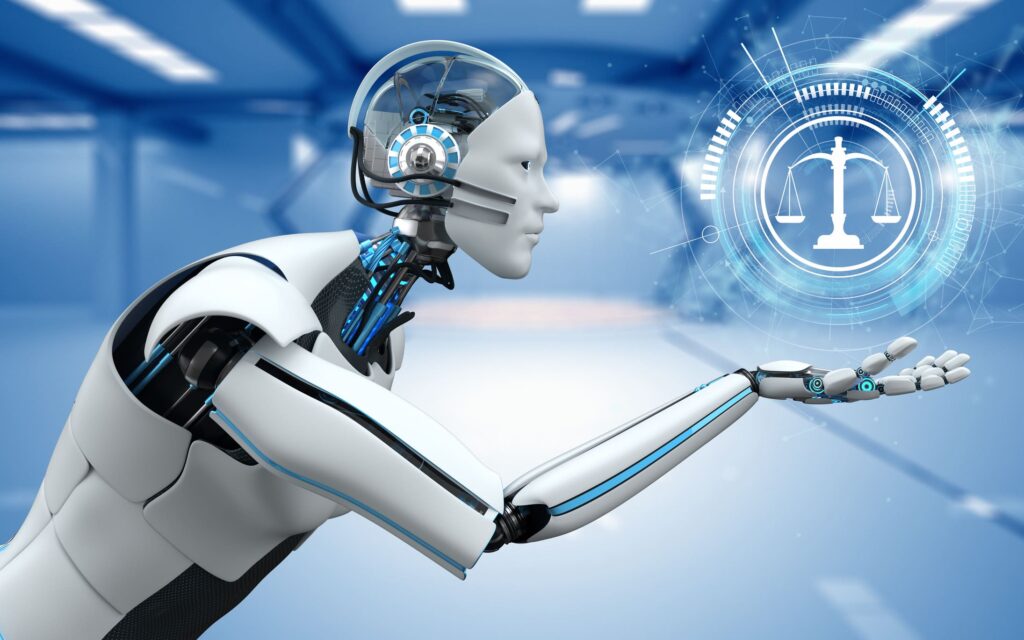
Science fiction can be held responsible for introducing Artificial Intelligence (AI) into our lives. However, it has surpassed the boundaries of fiction and become today’s reality, transforming multiple industries and fundamentally altering human experiences. AI’s new and varied uses across various sectors are getting harder to keep track of and manage.
This review aims to shed light on the present status of AI by examining the fifteen best examples of artificial intelligence that influence different areas of daily life.
By exploring fifteen unique and best examples of artificial intelligence, we present the complex impact of AI in 2024, spanning through a vast majority of industries, such as the healthcare industries, transportation industries, and the artistic community. In addition to showcasing AI’s inventive potential, this critical examination promotes educated debates regarding its possible hazards and ethical ramifications.
As we collaboratively construct a future fueled by ethical and sustainable technology developments, let us become ready to traverse the ever-evolving world of artificial intelligence (AI), embracing its advantages while vigilantly tackling its issues.
Prepare to go to artificial intelligence’s forefront and investigate its possible benefits and drawbacks. Hollywood may have been the only home of artificial intelligence examples in the past few years. Still, reality has surpassed fiction and is now a physical world that begs to be explored and understood.
For a comprehensive overview of the top AI marketing platforms across all categories, check out my detailed guide: Best AI Marketing Tools.
Table of Contents
1. The Rise of AI in Smart Home Automation
The modern house is changing due to the integration of AI into everyday life, ushering in a period of smart home assistants, resulting in AI technologies that provide increased comfort, customized experiences, and automated functions.
Artificial intelligence (AI)-driven Smart Home Assistants like Google Assistant, Amazon Alexa, and Apple HomeKit are renowned smart home assistants that constantly engage in machine learning to comprehend user preferences and customize the various smart home devices to suit individual requirements and habits.
These smart home assistants can automatically adjust the lights, temperature, and music based on your patterns and preferences. Voice assistants like Amazon Alexa and Apple SRI function on voice commands to perform many tasks like purchasing groceries, turning on lights, operating appliances, etc.
Ultimately, this integration of AI fosters a more efficient and effortless living experience. Homes become extensions of personal preferences, anticipating needs and responding instantaneously, transforming the concept of domestic living.
2. AI Brings a Data-Driven Revolution with Personalized Car Insurance
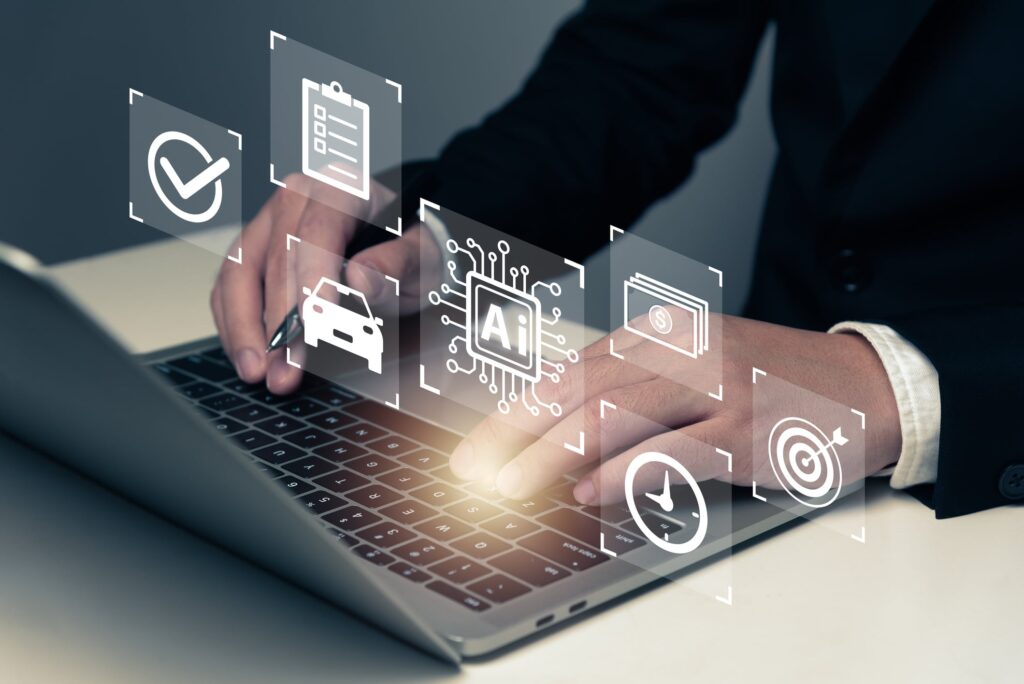
The conventional automobile insurance paradigm, which is frequently uniform and opaque, is radically changing thanks to artificial intelligence. AI algorithms enable customized car insurance plans based on drivers’ distinctive driving habits and risk variables.
With this change, the one-size-fits-all strategy that cannot sufficiently consider the range of driving behaviors is eliminated. Instead, AI carefully records driving behaviors, such as speed, braking patterns, and compliance with traffic laws, to provide predictive analytics and a dynamic risk assessment.
Metromile, a pay-per-mile insurance company, has a prominent AI system called AVA that assists in tracking driving behavior and adjusts your rates based on actual miles driven and driving habits.
Responsible drivers can see significant savings compared to traditional one-size-fits-all plans. This data-driven analysis enables responsible drivers to get premium insurance that aligns with their safety-conscious behaviors, while reckless driving may lead to premium adjustments.
This paradigm shift empowers drivers to influence their insurance costs actively. By adopting safe driving practices, individuals can unlock significant savings and gain tangible rewards for responsible behavior.
3. AI Brings the Future of Transportation with Self-Driving Cars
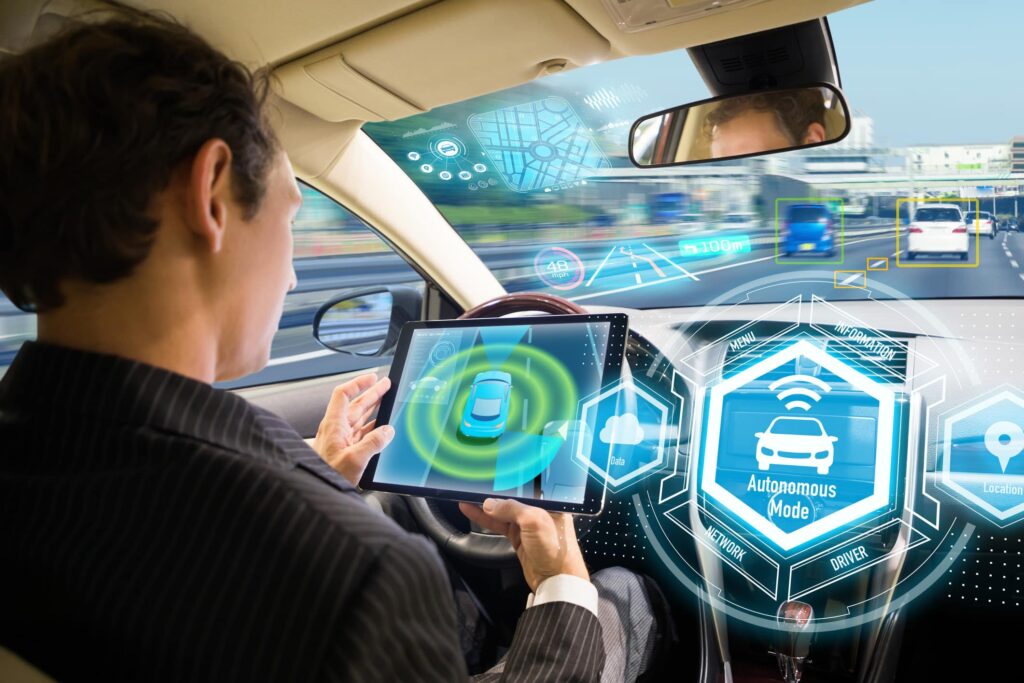
In the future, not too distant from now, driving will be a smooth and efficient activity instead of a possibly unpleasant one, thanks to artificial intelligence.
Tesla equips its cars with cutting-edge driver-assistance technologies like Full Self-Driving (FSD) and Autopilot. These technologies give a preview of personalized car assistance by using AI to manage lane changes, park autonomously, and traverse highways.
Even though they are still in the early stages of research, these characteristics mark a significant advancement toward the general deployment of autonomous vehicles.
Waymo, a Google subsidiary, has introduced a completely autonomous taxi service in Phoenix, Arizona, and offers similar technology. Through a smartphone app, passengers can hail a self-driving car and enjoy a relaxing, driverless trip to their destination.
Smart cars have far more promise than just increased convenience. These cutting-edge technologies have the potential to significantly increase road safety by removing human error, which is a primary cause of traffic accidents.
Congestion may be eased, and travel times can be shortened with AI-driven coordination, turning cityscapes into effective circulatory systems. Furthermore, autonomous vehicles allow those with limited mobility or age-related driving restrictions to regain the freedom and autonomy that come with personal mobility.
AI’s assistance in developing self-driving cars can improve safety and traffic flow, improve accessibility, and rethink our connection with personal mobility.
4. AI-Powered Robots Performing All Household Tasks
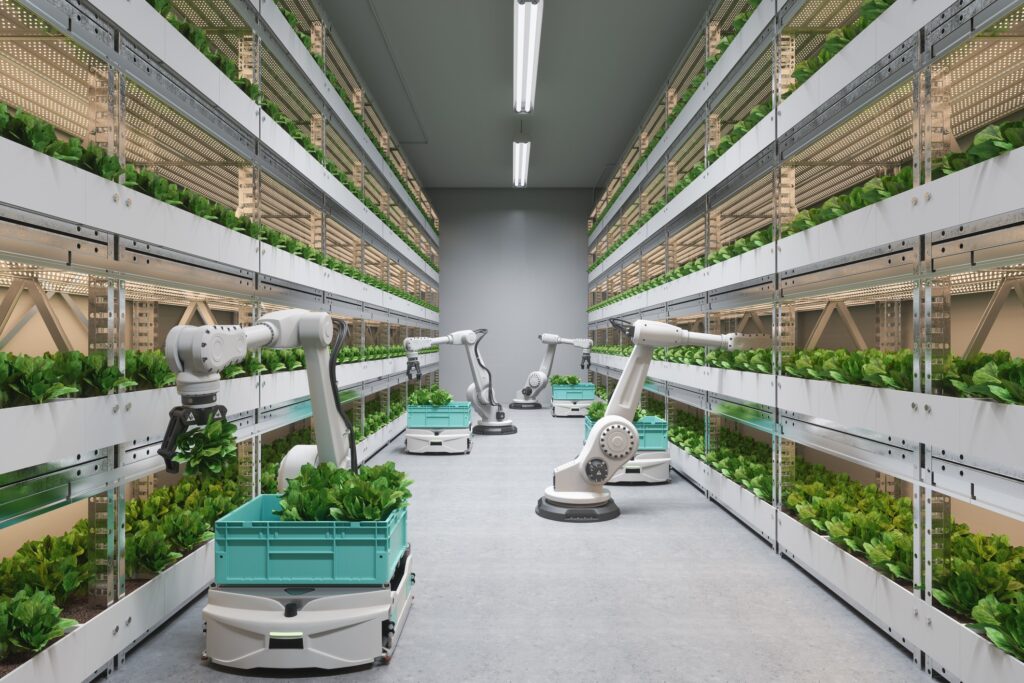
AI-driven robots are cutting-edge devices progressing beyond conventional uses, such as simple lawnmowers or vacuum cleaners.
They are capable of much more and can easily integrate into everyday life duties. Now, humans do not have to rely solely on manual labor or essential appliances for household chores.
AI-powered robots can perform various responsibilities with remarkable precision and efficiency, including cleaning, cooking, and laundry handling.
Moreover, these intelligent systems extend beyond mundane tasks and offer companionship and support.
Robotic pets, equipped with advanced AI and machine learning models and other interactive capabilities, can provide emotional connections and playful interactions, fulfilling the role of cherished companions within the home.
With its ability to sweep, mop, dust, and even fold clothes, SoftBank Robotics Pepper robot provides busy homes with a complete cleaning solution. Its capacity to read emotions is another prominent feature of its design. Pepper can connect with humans using touch screen technology and talk since he was designed with human interaction in mind.
Artificial intelligence (AI) drives Anki Cozmo robots, which engage, play, and learn from their users to provide company and amusement, particularly for kids and senior citizens.
However, viewing these robots as cohabitants, albeit digital assistants, with the inherent joys and challenges of shared living is essential.
5. AI in Marketing Revolutionizing Customer Engagement
Artificial intelligence (AI) has emerged as a game-changer in the ever-evolving digital marketing landscape. AI in marketing is transforming how businesses connect with their customers, creating more personalized, efficient, and effective campaigns that resonate with target audiences. Marketers are leveraging AI to revolutionize various aspects of their strategies, from data analysis to content creation and customer service.
Personalization at Scale
Gone are the days of one-size-fits-all marketing. AI algorithms analyze vast amounts of customer data to create hyper-personalized experiences. From tailored product recommendations to customized email content, AI ensures that each customer interaction feels unique and relevant.
Netflix, for instance, uses AI to personalize content recommendations and the artwork shown for each title. This approach has significantly improved user engagement and retention rates.
Predictive Analytics and Customer Insights
AI-powered predictive analytics tools are helping marketers forecast trends, anticipate customer needs, and make data-driven decisions. These tools can predict future customer behaviors by analyzing historical data and identifying patterns, allowing marketers to stay one step ahead.
For example, Amazon’s anticipatory shipping model uses AI to predict what customers might buy and when preemptively shipping products to nearby fulfillment centers.
Chatbots and Virtual Assistants
AI-powered chatbots and virtual assistants are revolutionizing customer service in marketing. These tools provide instant, 24/7 support, handling routine queries and freeing up human agents to deal with more complex issues.
H&M’s chatbot, for instance, acts as a personal stylist, asking customers about their style preferences and offering personalized outfit recommendations.
Content Creation and Curation
AI content creation tools assisting in everything from generating ideas to creating and curating content. Natural Language Processing (NLP) algorithms can analyze top-performing content, identify trends, and produce written content.
The Associated Press uses AI to generate thousands of earnings reports and sports news articles, increasing their content output significantly.
Programmatic Advertising
AI has transformed the advertising landscape through programmatic advertising. This technology uses machine learning algorithms to automate ad buying, allowing for real-time ad placements and targeting optimization.
Dynamic Pricing
AI algorithms analyze market demand, competitor pricing, and other relevant factors to adjust prices in real-time. This dynamic pricing strategy helps businesses maximize revenue and stay competitive.
Uber’s surge pricing model, powered by AI, adjusts ride prices based on real-time demand and supply conditions.
Voice and Visual Search Optimization
With the rise of voice assistants and visual search technologies, marketers optimize their content for these new search methods. AI helps understand natural language queries and interpret images, enabling more accurate and relevant search results.
You can refer, create AI Marketing strategy to learn how to implement AI in marketing for your organization
6. AI-Powered Platforms for Personalized Shopping Experiences

Various shopping platforms use artificial intelligence to evaluate user data and other key data points, including browsing patterns, past purchases, and external variables like weather, trends, and real-time traffic data.
Through this research, they can provide individualized product suggestions, similar to having digital assistants go through the extensive array of products offered by online stores and provide choices pertinent to each user’s requirements and tastes.
AI also has applications for supermarket shopping. Algorithmic analysis can forecast household requirements, restock essentials from the pantry before they run out, and even deliver unexpected goods depending on personal preferences and historical usage patterns and trends.
This streamlines the grocery shopping process and frees up time for other activities by eliminating the hassle of manually making shopping lists and traversing busy aisles.
You can choose your groceries at Amazon’s “Just Walk Out” shop in Seattle, and AI will immediately charge your account when you leave.
Businesses like Stitch Fix, which provide customized apparel delivery to your door, employ algorithms to examine your past purchases and stylistic preferences. This continuous learning cycle aims to anticipate future needs and suggest items by thoroughly examining the consumer data.
7. AI Industry is Revolutionizing Weather Forecasting with Accurate Predictions.

The days of inaccurate weather predictions and derailed outdoor activities are ending. Meteorology is changing due to artificial intelligence, bringing a new era of precise and thorough forecasts.
Google AI created a Flash Flood Prediction System that can accurately forecast flash floods by analyzing weather data and topographical elements during India’s intense monsoon season. This important information aids in the evacuation of inhabitants in high-risk regions and reduces damage from unexpected flooding.
AI creates a detailed forecast of the following weather by evaluating and interpreting this enormous amount of data, considering variables like temperature, wind speed, likelihood of precipitation, and even the sunlight component. This paradigm shift empowers individuals with unprecedented confidence in planning outdoor activities.
8. AI is Transforming Kitchens and Culinary Experiences

Artificial intelligence is driving a massive revolution in the home cooking space. AI analyzes massive quantities of data to provide personalized menus and meal recommendations, including user ratings, recipe databases, and each person’s nutritional needs.
By evaluating the accessible items and recommending recipes that maximize what is on hand, these algorithms can take on the role of proactive kitchen assistants. This lowers food waste, simplifies meal planning, and inspires inventive recipe modifications.
Yummly is an app that makes personalized meal recommendations based on artificial intelligence (AI). It looks through your stored ingredients, dietary preferences, and kitchen appliances. You can use this to discover new recipes that fit your cooking style and tastes.
Using AI, Chefling examines a recipe and suggests inventive ways to replace any components that aren’t there based on what you already have in your cupboard. This promotes creativity and lessens reliance on certain items, enabling you to customize and modify recipes to fit your resources.
In the kitchen, this fusion of human enthusiasm with AI algorithms creates a transforming atmosphere that encourages experimentation, research, and the delight of uncovering new culinary possibilities.
9. AI Tutors are Bringing Personalized Learning Revolution
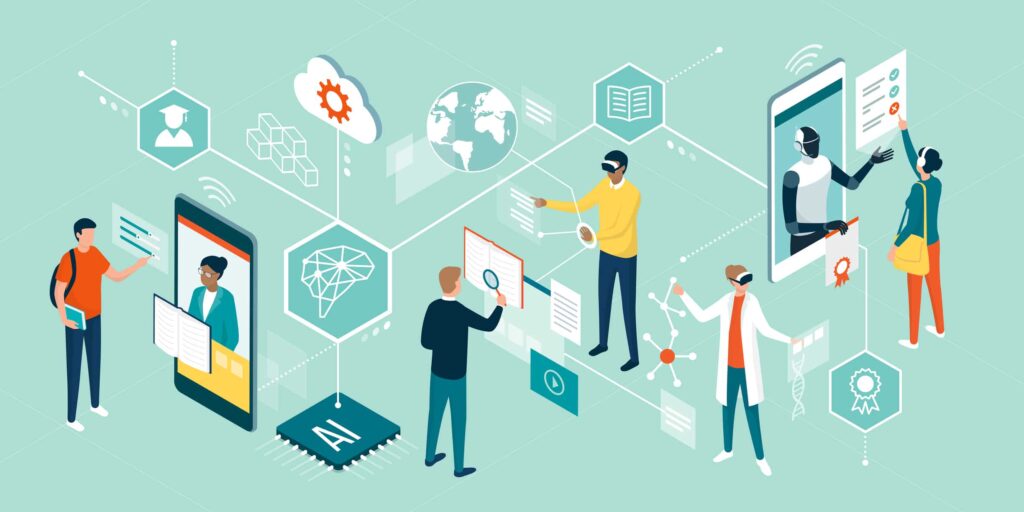
AI-powered educators can provide each student with a customized and deep learning experience based on their interests and requirements. AI tutors are intelligent study helpers who can adapt to individual learning styles and speeds.
Complex topics might be broken down and presented through interactive puzzles or customized game-based situations to promote more profound knowledge and engagement.
These virtual teachers become known for their unwavering patience, which gives pupils the confidence to explore ideas and ask questions.
Dreambox Learning is an adaptive math learning platform that creates tailored learning paths with fun games and exercises based on an AI assessment of a student’s arithmetic strengths and limitations. As a result, children are better equipped to learn at their speed, understand basic topics before moving on, and gain confidence and higher marks on arithmetic tests.
Furthermore, even Duolingo uses AI to customize language-learning exercises based on each user’s proficiency and chosen learning method. It dynamically modifies the instruction level, pinpoints areas requiring more practice, and offers tasks tailored to improve vocabulary and grammar.
This approach fosters deep learning and a sense of agency and curiosity, transforming the educational process from a passive endeavor into a choose-your-own-adventure quest for knowledge.
10. AI Fact-Checkers are Exposing Fake News
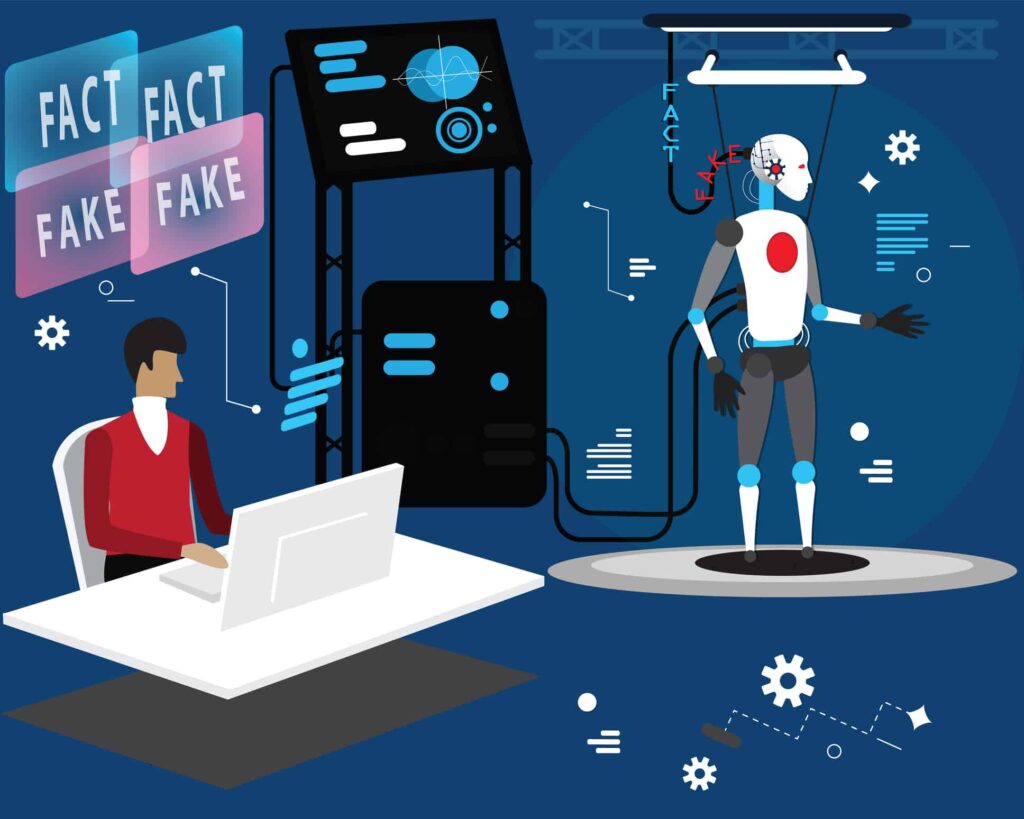
AI fact-checkers effectively work as virtual verifiers, searching the enormous internet space for false material and disproving it.
Their methodical approach extends beyond textual content analysis. They carefully analyze images, videos, and even social media comments to apply reasoning and fact-checking techniques.
This enables them to reveal the deceptive methods used by biased bots, the underlying motivations behind seemingly innocent viral memes, and the gaps in the convincing fake news pieces.
A smartphone app called Logically uses artificial intelligence (AI) to evaluate assertions, viewpoints, and occurrences. It uses the data it collects from monitoring over a million social media sites and web domains in real-time to evaluate the accuracy of online statements and information.
Founded in 2017, ClaimBuster is an online resource for fast fact-checking. Users can use ClaimBuster to verify the accuracy of their material by using the Google Fact-Check Explorer API. It compiles search results comparable to their textual assertion and assesses such claims’ relative veracity or untruth.
11. AI Translators are Breaking Down Language Barriers

For a while now, language barriers have significantly hindered cross-cultural understanding and the amount of time individuals from diverse backgrounds may spend together.
AI has introduced multilingual translators that can translate across a wide range of languages with greater accuracy and fluency.
This ground-breaking technology improves travel experiences and makes cross-border business relationships easier, facilitating human interaction that surpasses language obstacles. Moreover, AI translation systems are constantly improving.
Google Translate uses artificial intelligence (AI) in real time to convert text from one language into another. This empowers travelers to navigate any city with ease.
Beyond particular situations, AI translation has advantages that foster more cross-cultural communication and comprehension.
People can easily access global web material, which they may interact with to broaden their horizons and develop cultural sensitivity.
Furthermore, conversing with people from other origins enables sharing of individual experiences, customs, and tales, shattering preconceptions, and fostering bonds.
12. AI Providing Sustainable Solutions to Protect Nature

AI can provide insights based on historical data and provide optimal solutions to overcome ecological obstacles.
AI algorithms examine enormous amounts of information and provide long-lasting solutions across various industries. The optimization of energy production and consumption is one well-known application.
A prominent example of the usage of AI in this sector is the collaboration between Google DeepMind and the UK National Grid. They developed an AI system to reduce dependency on fossil fuels and promote a more sustainable grid.
Siemens MindSphere platform also uses artificial intelligence to understand vehicle data to improve fleet transportation logistics, lowering emissions and fuel consumption while increasing productivity.
Moreover, Ecobee can be integrated with Alexa so that voice commands can be used to operate the AI-powered thermostat. This encourages conscientious energy management by letting users easily check energy usage and change temperature settings.
13. Predictive AI Algorithms Assisting in Crime Prevention
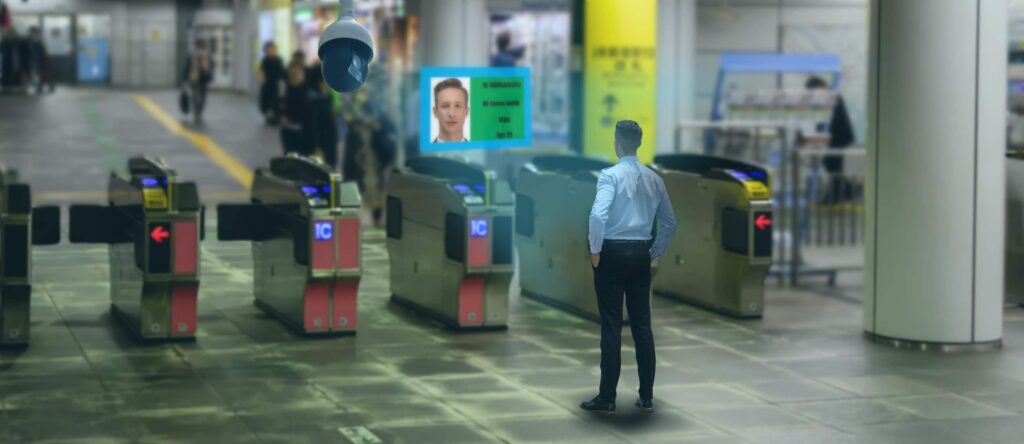
The proactive approach to criminal response, supported by AI, replaces the old reactive paradigm. Driven by enormous amounts of data analysis, predictive algorithms are becoming effective weapons in the war against crime, potentially improving public safety and maximizing the use of available resources.
Numerous US cities’ police departments utilize the gunshot detection technology ShotSpotter. It locates, detects, and instantly notifies law enforcement and security officers of instances involving illicit shooting using advanced acoustic sensors.The digital notifications feature a specific map position and associated information about the type of shooting, number of rounds fired, and address.
With the use of real-time video analytics and deep learning algorithms included in some security cameras and video recorders, Hikvision’s AcuSense technology can automatically identify people and cars and provide prompt notifications to customers’ mobile devices.
14. AI Paintings Leading the Artistic Revolution

AI Art Generators and AI Character Generators are driving a paradigm change in the conventional creative creation scene. The limits of creative expression are being redefined by AI algorithms, which provide fresh perspectives and opportunities for collaboration even as traditional artistic forms and well-known masters continue to be helpful.
The days of depending only on hand methods and personal creativity are long gone. Vast archives of previously created artwork train AI algorithms, which explore the emotional foundations, styles, and methods of well-known painters like Rembrandt and Van Gogh.
This enables them to create unique works that both push the boundaries of traditional forms and resonate with established creative traditions.
On the Artbreeder platform, users can collaborate in real-time with one another to produce and alter AI-generated pictures. This promotes experimentation with various styles and approaches as well as a diversity of artistic products.
Google’s Magenta Project investigates the nexus between AI and music. This demonstrates how AI can enhance artistic expression beyond the visual arts.
Using artificial intelligence (AI), PortraitAI converts face photos into various artistic mediums, such as pixel art, animated cartoons, and classic paintings. This individualized touch lets People have a more intimate and personal encounter with art.
AI’s incorporation into creative production marks a dramatic advancement in art. It is about broadening the spectrum of artistic expression, encouraging creative partnerships, and opening new channels for creative inquiry rather than removing old masters or replacing forms.
15. AI Coaches Pushing Athletes to New Heights
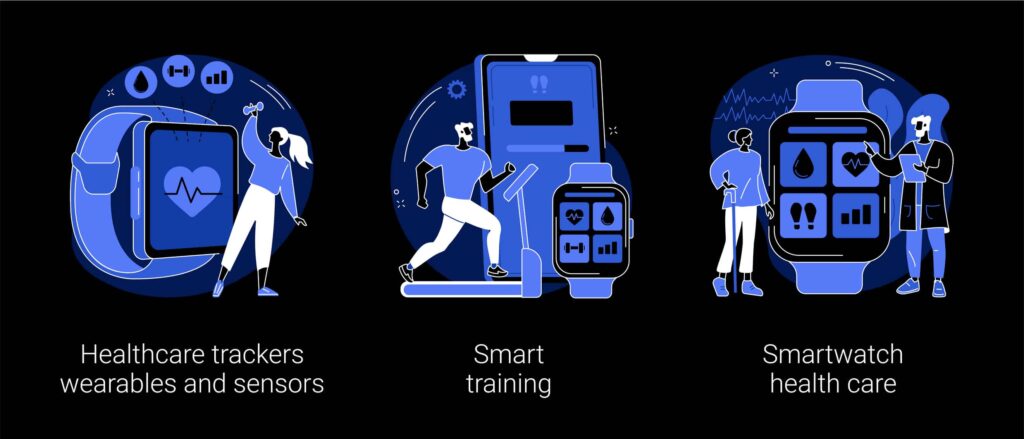
The introduction of AI technology is significantly changing the sports training scene. This paradigm change offers athlete-specific insights and training programs with never-before-seen accuracy and depth, going beyond conventional performance analysis and coaching methods.
With their MaxFit platform, Nike uses artificial intelligence (AI) to evaluate athletes’ movement patterns and customize exercise plans in real time. Training is tailored to each person’s abilities and limitations, improving performance and lowering the chance of injury.
In 2019, OpenAI’s Dota 2 squad—made up only of artificial intelligence players—beat a team of pros. This demonstrates how AI may evaluate intricate plans and quick reflexes, which could lead to improved coaching techniques in real-world and esports sports.
Zone Athletics employs artificial intelligence (AI) to evaluate training data and forecast an athlete’s preparedness for competition to avoid overtraining and guarantee optimal performance when it matters most.
The role of AI in sports extends beyond mere analysis and optimization. These intelligent algorithms act as tireless training partners, providing athletes with continuous feedback and personalized support beyond the limitations of traditional coaching environments.
In the pursuit of athletic excellence, the application of AI in sports training represents a revolutionary advance. These advances help athletes perform at their best by giving them access to individualized training plans, continuous support, and data-driven insights.
While human passion and determination are still essential components of success in sports, artificial intelligence (AI) is a powerful ally, offering the critical framework for data-driven plans and objective analysis that enable players to reach physical heights beyond the reach of conventional training techniques.
As AI technology continues to evolve and its integration into sports deepens, the future promises an even more magnificent spectacle, where human athleticism and sophisticated computational analysis orchestrate together to rewrite the story of sporting achievement.
Conclusion
This article comprehensively explains fifteen creative and best examples of artificial intelligence (AI) and its machine learning algorithms. It depicts a future that was previously only imagined in science fiction. These days, artificial intelligence (AI) permeates every aspect of daily life, changing how we work, engage with information, and even spend our leisure time. Beyond mere convenience, its existence can improve human abilities and unleash the potential that was before unthinkable.
Navigating the artificial intelligence (AI) revolution necessitates a proactive and balanced approach between human learning and machine learning. We must face this landscape with open minds, responsible actions, and a measured sense of optimism. Embracing the immense potential of artificial intelligence while acknowledging its risks and guiding its development with ethical principles will ensure it emerges as a force for good, augmenting human capabilities and shaping a future brimming with unprecedented possibilities.
Frequently Asked Questions (FAQs)
Q1 Will Artificial Intelligence (AI) robots take over the world?
The concept of robot overlords is more science fiction than reality despite artificial intelligence being quite firm. AI tools are there to support us, not to take our place. The secret is to create and apply AI appropriately to remain a tool for good rather than a terrifying danger. We can accept AI’s advantages while preserving our moral principles and working toward a bright future for all people.
Q2 How can I learn more about Artificial Intelligence?
To understand more about Artificial Intelligence, there are a variety of materials accessible, including books, movies, articles, and online courses. Remember that a better informed and aware population is better equipped to shape its growth and use it responsibly.
Let’s collaborate to create a collaborative AI future where everyone can contribute and have a voice.
Q3 What are some ethical considerations for Artificial Intelligence development?
It is essential to consider all possible effects of artificial intelligence before vastly developing and applying it. We must address potential concerns about prejudice, discrimination, and privacy to ensure that everyone benefits from AI, not just a handful of people. We must work together to build a future where artificial intelligence is integral in building inclusivity and sustainability for all.
Even in its infancy stage, AI offers many fascinating opportunities and significant obstacles. Let’s tackle it with an open mind, responsible behavior, and a shared vision of a better future driven by the limitless potential of artificial intelligence and the wonder of human invention.

